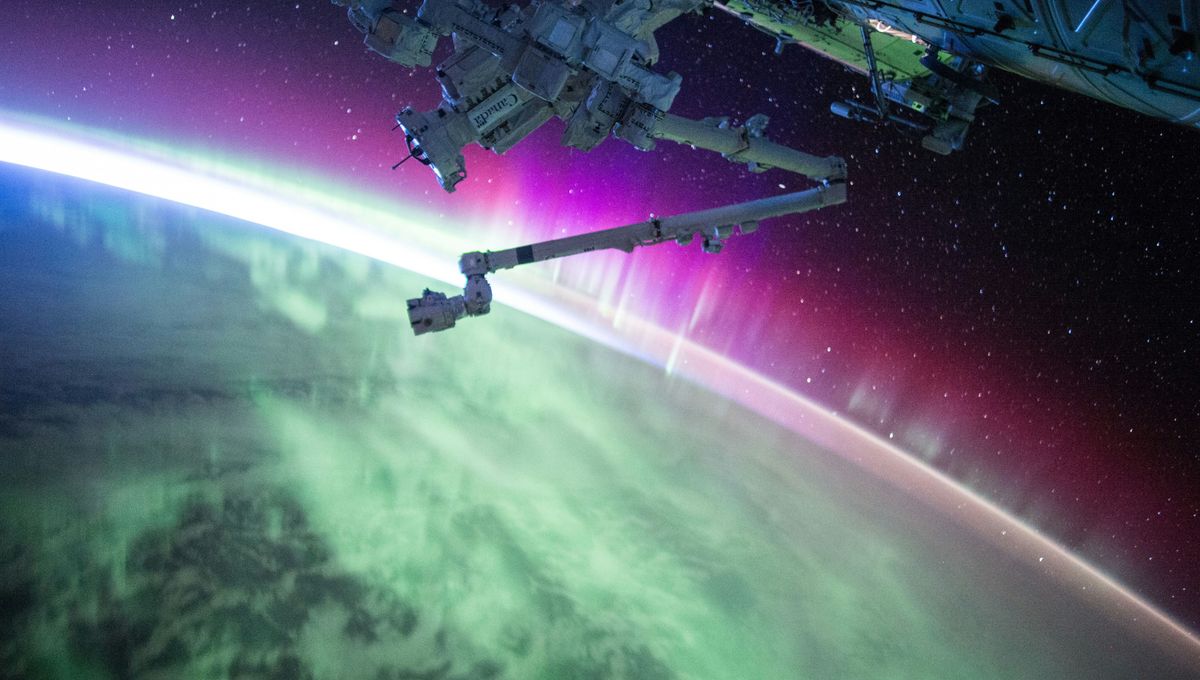
May 2024 was a hard act to follow, so June certainly has its work cut out. However, an old friend is returning to help keep the party going, with the potential to trigger a repeat of the historic aurorae that lit up the night skies across the world last month.
That old chum is, of course, none other than AR 3664: the huge sunspot responsible for May’s incredible light shows. Like a resurrected Tolkienesque wizard, the solar behemoth has taken on a new title as it returns from the abyss, and shall henceforth be known as AR 3697.
After spending two weeks traversing the far side of the sun, the moody region reappeared on Monday, May 27. Entering like a true diva, the sunspot immediately let off an X-class solar flare – “X” denoting the most intense category of flare – before firing off a second two days later.
According to the National Oceanic and Atmospheric Administration’s (NOAA) Space Weather Prediction Center, a coronal mass ejection (CME) associated with the more recent flare “is likely to enhance the Earth’s magnetic field” tonight (May 31) and early tomorrow morning. This is expected to result in a minor to moderate geomagnetic storm – with a rating of G1 to G2 – that could produce stronger-than-average aurorae, though these are unlikely to be visible at low latitudes.
Coronal mass ejections are eruptions of plasma and magnetic field from the sun’s corona that, when correctly oriented, can collide with the Earth’s magnetosphere and trigger intensely colorful displays in the night sky. Last month, AR 3664 battered the planet with a barrage of at least five consecutive CMEs, resulting in the first G5 geomagnetic storm in over 20 years.
Whether or not we’ll get anything approaching that level of intensity in June remains to be seen, although our best chance will be from June 4-6, when AR 3697 will sit just to the right of the Sun’s center. Once in this position, the sunspot will be magnetically connected to Earth, meaning any eruptions are likely to be fired straight at us.
Luckily, this window also coincides with June’s new moon, which means skies will be at their darkest at this point so any solar storms that do reach us should be extra visible. However, there is currently no forecast for this period, so it’s impossible to say exactly what sort of aurorae we’re going to get this month.
What we do know, however, is that the sunspot has been less active since it gave us a G5 level storm a few weeks ago, and is currently producing fewer X-class flares than it did in mid-May. It’s therefore pretty unlikely that we’ll get anything as strong or as widespread as we did then, although the fact that AR 3697 is clearly still capable of generating X-class flares means we can’t rule anything out.
If there is to be a repeat of last month’s incredible celestial performance, then, it’ll almost certainly take place between next Tuesday and Thursday. Any major eruptions that occur during this window could result in strong aurorae visible at low latitudes, although your chances of seeing anything will also depend on cloud cover and how far you are from major sources of light pollution.
Source Link: As Aurora-Causing Sunspot Returns, Here’s What To Look Out For In June